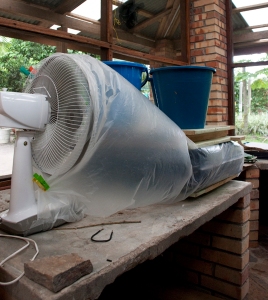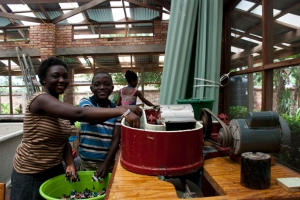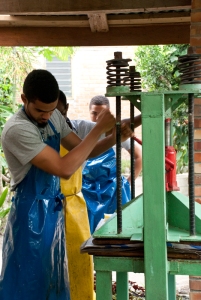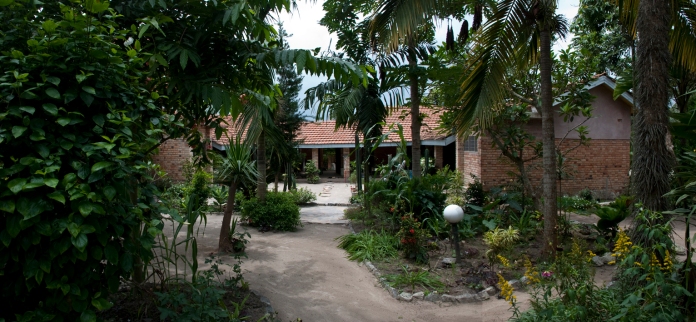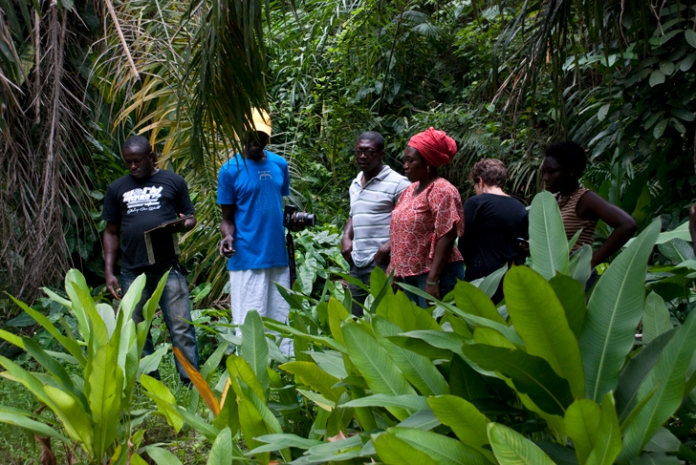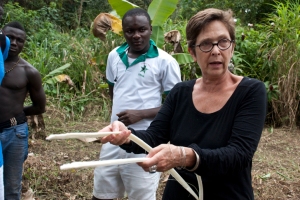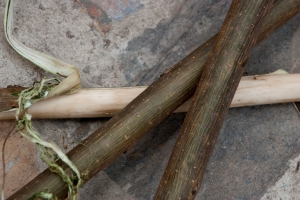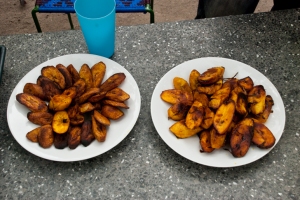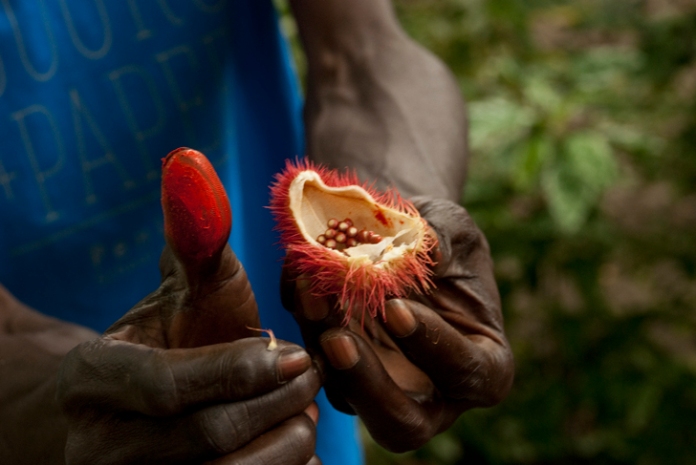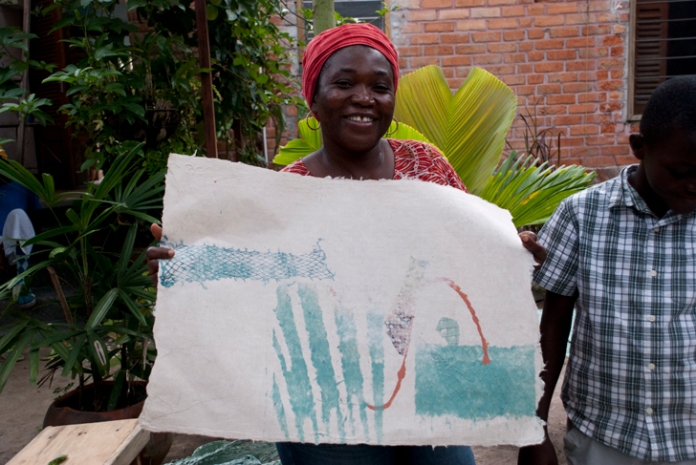With the papermaking workshop now over and having returned to the US, I have had some time and distance to reflect on what I experienced. Ghana, and the Ashanti region in particular, is a place filled with life, culture, creativity and opportunity.
Perhaps because I was only there for a relatively short amount of time, I felt a certain sense of optimism among people but also uncertainty. People seem to have a strong sense of identity and take pride in their culture, welcoming those from outside to share. There is a sense that things are on the move and a high value is placed on education. However, there is also a degree of instability. When I arrived, cars were lined up for hours due to a national fuel shortage. The exchange rate was the equivalent of about one US dollar to three Ghanaian Cedis. Over the course of five weeks, the Ghanaian Cedi depreciated so much that one dollar would buy almost four Ghanaian Cedis. Prices changed from one day to the next and businesses had to maneuver accordingly, ordering and pricing goods and services in a constant state of flux. Ebola had become engrained in the national consciousness as news of increasing death tolls entered from neighboring countries. Miraculously, it had not yet entered Ghana.
As the papermaking workshop unfolded in this context, questions of global health in relation to the project sometimes seemed far afield. However, a dedicated group of about 10 people showed up regularly, eager to learn a new technique and see how something rampant in the surrounding environment could be transformed into something beautiful and useful. For a week, we beat raw fibers from the inside of the bark of the Paper Mulberry tree, made vats of pulp from both the Paper Mulberry and textile scraps, pulled molds to make sheets of paper, and flattened them to dry.
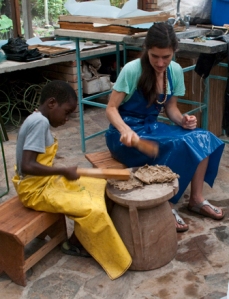
Emmanuel, one of the children of the family I was staying with, and me pounding Paper Mulberry fibers.
More than the papermaking itself, the project was a way for people to come together, step away from their daily routines and let their imaginations run wild. Participants came from a variety of backgrounds. Dr. Dorothy Amenuke and Mr. Kwabena Poku are fine arts professors at the local university, KNUST and Dorothy would bring her two children with her every day. Former MFA students, Frederick Bamfo and Geoffrey Akpene Biekro, also attended. Kwabena Akrasi and James Kweku Duffy are communications students and Kwame Donkor is studying engineering at KNUST. Bernard Coleman was a young man who just finished a year of national service after receiving a degree in horticulture and had traveled from the Volta region to join the group. Niels Staats had emigrated from the UK and was starting an arts non-profit and residency program in Kumasi. Even Gloria, the young woman who helped with the children and housekeeping for the family I was staying with, was able to join after I learned she was interested in textile design. All of us came together daily at the home of Caterina Niklaus and Smart Sippah who provided us with a space in which to work as well as an inspiring model for how to create a living space that heavily incorporates and celebrates the diversity of the natural environment.
Over the course of the week, Dr. Amenuke and Mr. Poku talked about ways to incorporate new techniques and media into their curriculum. Kwabena and James began to formulate ideas for how to grow a business that would both generate income and responsibly produce a Ghanaian-made product in short supply. Kwame explained some of the mechanics behind the basic machines we were using. Niels imagined artists who might be drawn to a residency in Ghana specifically to build upon their papermaking practice in a local context. Though Mary Hark took a very hands-off approach, providing participants with the basic knowledge regarding the materials and process, she laid the ground for participant-led exchange, collaboration, and generation of new ideas.
When I think about the biggest impact the papermaking project had, I think it would be its ability to bring people together who might not otherwise meet and introduce them to a new way of working that draws on local materials. Though still operating on a very small scale, the papermaking project has the potential to turn into something much larger. It could take on a variety of forms but will have to be done so in a sensitive, responsible manner. It could operate on a workshop basis, attracting an international audience and contributing to the growing tourism industry in Ghana. Its model could be replicated by innovative, enthusiastic people like Kwabena and James and turned into a business that employs a variety of local farmers, artisans and technicians. Its end product could be folded shaped and sculpted into a whole set of finished goods that could be sold nationally to the many hotels popping up around the country. It could be incorporated into the local curriculum as a means to raise awareness about the implication of invasive plant species and the Paper Mulberry in particular. It could also remain as is, providing a base from which visions can grow and participants can think about how to direct their education, skills and efforts in new ways. Or it could be a combination of these. All are valid and possible and offer unique, long-term contributions to global health.
Though papermaking will not offer a solution for eradicating Ebola or answering to fuel shortages, it can generate a soft wave that gently pushes people to form partnerships and re-imagine their possibilities. Those who I met over the course of my stay in Ghana who have already been involved are living proof. The farmers who gather the raw fibers from the Paper Mulberry appreciate the extra income and assured us of their continued interest in future work. Gloria called me from Ghana the day after I returned to the US to tell me she had told her mom (who is a seamstress) about the experience and was thinking about its relation to her textile design work. The Ashanti are known for their astute sense of business and also for their strong and lively culture and will undoubtedly find ways to morph the project in ways that make it suitable to the environmental and cultural landscapes in which they operate.





